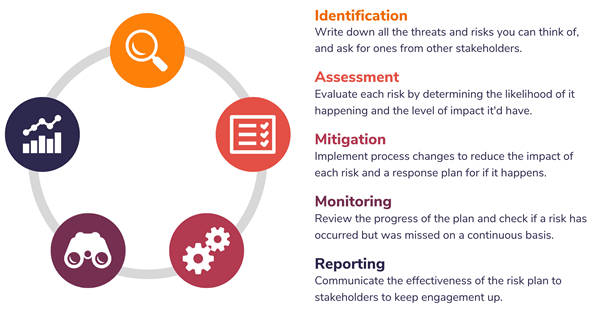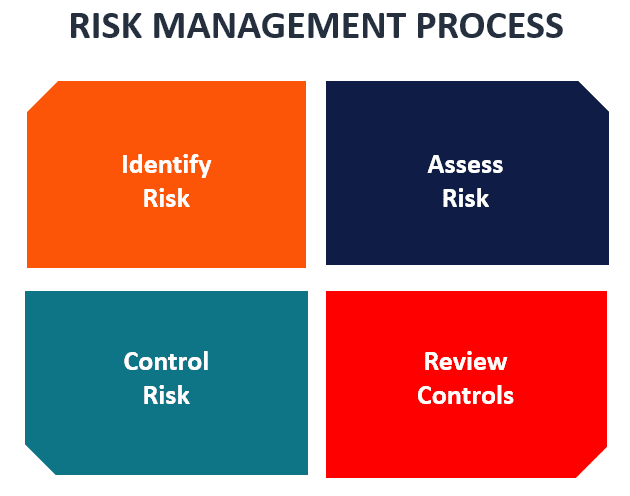Financial risks, legal responsibilities, managerial mistakes, natural calamities, and other misfortunes are only a few possible concerns. IT and data security are major concerns for many organizations. It includes identifying and controlling threats to all aspects of a company’s operation, including confidential corporate data, customer information, and intellectual property. Unforeseen events can cost the business money or even its survival – small businesses deal with its ad hoc, while major corporations do it formally.
As a result, risk management helps firms prepare for the worst, which often protects them long term. Risk management is vital because it alerts businesses to potential threats and allows them to mitigate them before they materialize. Businesses would incur huge losses if risk management was not done.
Risk Management’s Advantages
- Establish processes to avoid possible risks and reduce their impact if they do materialize, as well as coping with the consequences.
- Organizations are confident in their business decisions because they understand the dangers and how to avoid them.Advertisement
- Corporate governance concepts that focus on risk management might assist a firm in achieving its objectives.
- Establishes a safe and secure working environment for both employees and consumers.
- Reduces legal responsibility while improving corporate operations’ stability.
- Protection from negative events.
- Aids in the creation of a sound insurance plan and the identification of insurance requirements, both for protection and to save money on insurance payments.
Risk Management in 5 Easy Steps

1. Determine the risks
The four main risk categories are: hazard risks (fires, accidents), operational risks (turnover, supplier failure), financial risk (recession) and strategic risks (new competitors, brand reputation). Recognizing the many hazards, your face is essential to risk management. Internal research and external research may all assist businesses analyze risk. Internal risk assessments can be done through interviews, group brainstorming, and focus groups. Once a company has recognized its risk in each area, it may go further. Risk management is vital because it allows a firm to effectively identify and handle potential dangers.
2. Assess the risks
Recognizing the issue is often the first step in finding a solution. “What produced such a risk, and how may it influence the business
3. Assess or rank the risks
Risks must be ranked and prioritized from severe to minor. The most serious hazards are listed first, followed by minor inconveniences. Management can best respond to a series of dangers if they are aware of the risk and its impact on the firm.
4. Deal with the risks
Now that your firm has identified and assessed the risks, each one must be avoided or eliminated as much as possible. This is done by contacting professionals in each area or field concerned. Meeting with others to discuss the danger and solution is essential to preventing, containing, and treating the risk.
5. Keep an eye on the risk and evaluate it
Consequently, certain risks cannot be completely avoided, and risk management is not a linear process. It is an ongoing process in a dynamic organization. Changing circumstances need periodic evaluation of the procedure. An organization’s resilience and adaptability will improve as it formalizes its risk management strategy and develops a risk culture. Monitoring risks may also secure your company’s survival.
Risk Management Approaches

Once the organization’s specific risks have been recognized and the risk management process has been implemented, there are a few different approaches that may be used. Remember that each risk is unique and may necessitate a unique risk management plan. There is no one-size-fits-all solution or approach for dealing with risks.
Risk Avoidance. Risk avoidance does not mean avoiding dangers after they occur, but rather preventing them from arising. Avoiding risk is avoiding as many potential threats as possible. This prevents business disruptions, losses, and downtime.
Risk Reduction. Project planning, business processes and infrastructure may all be modified to help reduce risk. This approach of risk management can help companies reduce some hazards. Making adjustments to reduce risks can help you enhance the efficiency of your processes.
Risk Sharing. It is possible for external entities to share risks with internal divisions. Finding common hazards and solutions is a great way to minimize and manage risk.
Risk Retention. One rationale for rating risks from high to low is to determine their economic viability. Firms may sell risk if the projected reward exceeds the associated costs.
Conclusion
Risk assessment and management are the best strategies for a firm to prepare for unforeseen situations. A company’s chances of success rise when it evaluates its risk management strategy and creates mechanisms to address it. If a problem arises, your company will be ready to solve it and recover swiftly.
